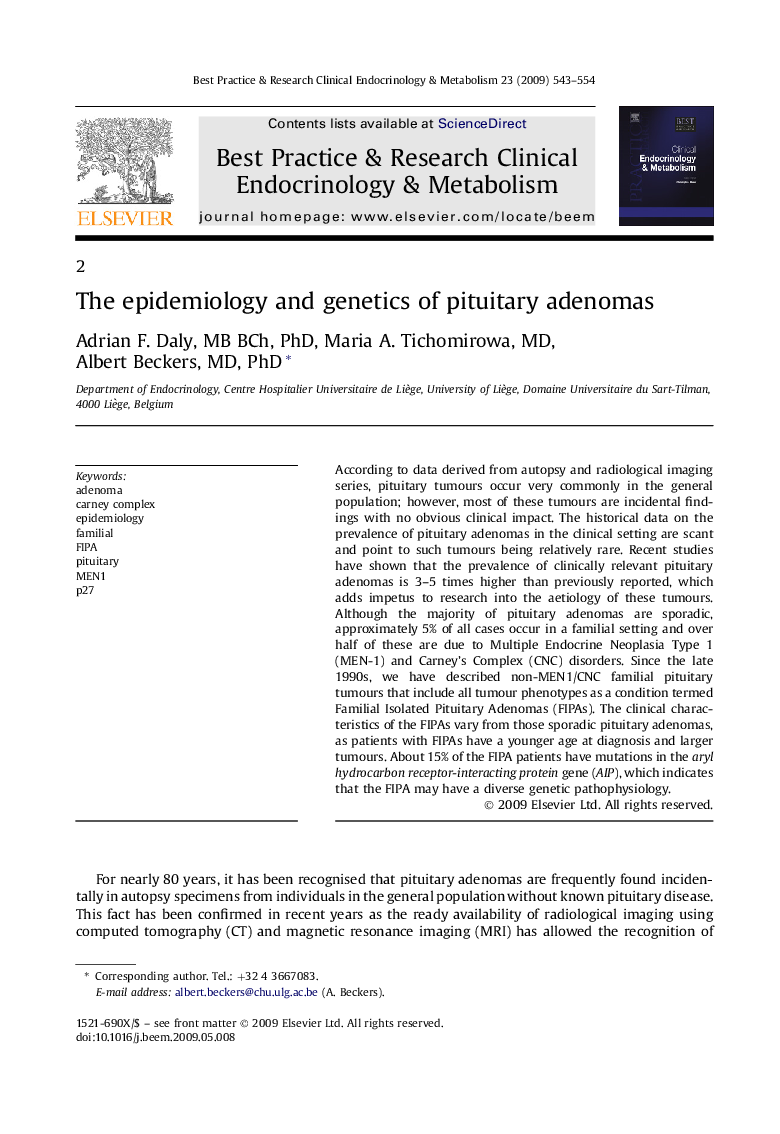| Article ID | Journal | Published Year | Pages | File Type |
|---|---|---|---|---|
| 2792077 | Best Practice & Research Clinical Endocrinology & Metabolism | 2009 | 12 Pages |
According to data derived from autopsy and radiological imaging series, pituitary tumours occur very commonly in the general population; however, most of these tumours are incidental findings with no obvious clinical impact. The historical data on the prevalence of pituitary adenomas in the clinical setting are scant and point to such tumours being relatively rare. Recent studies have shown that the prevalence of clinically relevant pituitary adenomas is 3–5 times higher than previously reported, which adds impetus to research into the aetiology of these tumours. Although the majority of pituitary adenomas are sporadic, approximately 5% of all cases occur in a familial setting and over half of these are due to Multiple Endocrine Neoplasia Type 1 (MEN-1) and Carney's Complex (CNC) disorders. Since the late 1990s, we have described non-MEN1/CNC familial pituitary tumours that include all tumour phenotypes as a condition termed Familial Isolated Pituitary Adenomas (FIPAs). The clinical characteristics of the FIPAs vary from those sporadic pituitary adenomas, as patients with FIPAs have a younger age at diagnosis and larger tumours. About 15% of the FIPA patients have mutations in the aryl hydrocarbon receptor-interacting protein gene (AIP), which indicates that the FIPA may have a diverse genetic pathophysiology.
